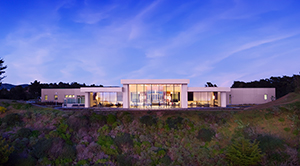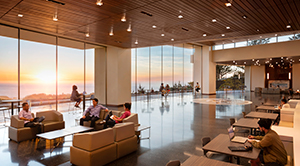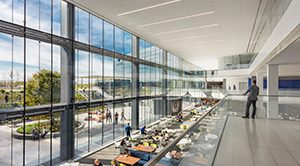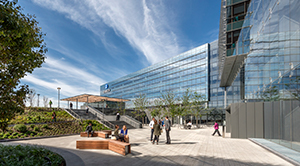Honoring Earth Day 2021: Restore The Earth
In honor of Earth Day 2021, we celebrate this year’s theme of “Restore The Earth” by featuring two of our many sustainable structures designed and built over the years. For 51 years, Earth day has been observed as a day to bring awareness to environmental protection and preservation, and in our industry, that means building sustainable and energy efficient structures to enhance the built environment and make communities more green, healthy, and equitable. This includes an emphasis on circular design principles, and doing our part to reduce, reuse, and recycle materials during the building’s life cycle- from construction to operations to end-of-life.
Celebrating Structural Glass: The Sustainable Choice in Building Design
At Sentech, we celebrate Earth Day because we know small changes can make a difference, and because, as leaders in the structural glass industry, we know that glass is a key contributor to sustainable, low energy building design. And we believe in glass as the sustainable choice in building design. Over the past few decades, glass technology has rapidly evolved, and the availability of materials and glazing applications in modern architecture has made glass a major contributor to energy efficient buildings. These advances include the continuous improvement in thermal insulation performance, evolving methods of modulating solar heat gain and light transmission and the rapid advancements in optical quality to maximize natural daylight in structural glass applications. Those advancements, coupled with innovative systems such as double and triple-glazed façades with low-e coatings, offer robust insulation properties and design options to ambitious architects seeking to design and construct low energy or passive buildings.
Glass is also a product of choice for sustainable building design, and sustainable buildings benefit from the minimal environmental impacts of glass. Glass is made from abundant, non-polluting raw materials, and its fabrication process is highly energy-efficient, requiring low levels of water, and generating little waste. The vast majority of glass products for buildings are recyclable at end-of-life, making glass part of the circular building economy. In short, glass functions as a sustainable material, and the ability of structural glass systems to increase access to natural light not only improves the energy efficiency of a building, but enhances the energy levels of the people who work, live and use the spaces where structural glass is an element of the building envelope.
Today, Earth Day, is a day meant to not only increase awareness of environmental issues, but to continue to create spaces for humans to connect and reflect on the utmost beauty of nature. We can all take action to improve our environment, and here at Sentech, we strive to use glass as a sustainable design element, to increase natural light, maximize resources, and minimize environmental impact. Check out two of our favorite sustainable projects below, and how they do their part to make this earth a better place.
Project Feature: Skyline College B12 Clear Span Façade
- LEED Gold
- Zero Net Energy Ready
- Saving by Design Program Participant
- Building uses geothermal underground piping to provide heating & cooling
- Façade uses Insulted Glass Units to adhere to California’s Title 24 Building Energy Efficiency Standards
- 22-foot tall IGU panels increase access to daylight and views of the surrounding natural environment
Credits: Owner (San Mateo Community College District), Architect (DES Architects), GC (XL Construction), Photos (Lawrence Anderson)
Project Feature: Zurich North American Headquarters Double Skin Façade
- LEED Platinum
- 62% energy cost reductions
- 76% of occupied spaces to meet daylight criteria
- Façade mitigates interior/exterior temperature differences
- Tuning of façade allows for shading and orientation with daylight sensors
- 99% of construction and demolition waste was diverted from landfill
Credits: Owner (Zurich North America), Architect (Goettsch Partners, CannonDesign), Glazing Contractor (Ventana), GC (Clayco), Photos (James Steinkamp)




